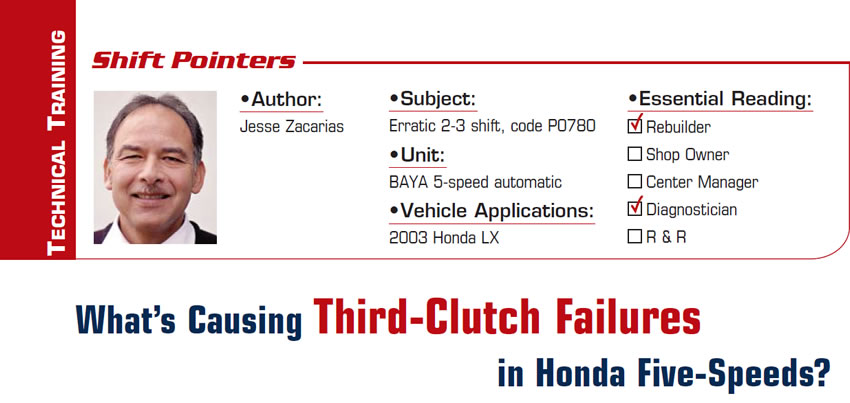FNR5 TCC slip and/or shift solenoid E stuck off
The FNR5 transmission can be found in most Ford and Mazda front-wheel-drive vehicles and has been with us for a while. One of the most-common calls we get on this transmission in the tech center at Valve Body Pro is for a code P0741 TCC slip and/or P0771 shift solenoid E stuck off. Recently we had a 2008 Ford Fusion with this problem. Figure 1 shows the SSA (SSPCA) increasing the modulation but no drop in rpm slip.
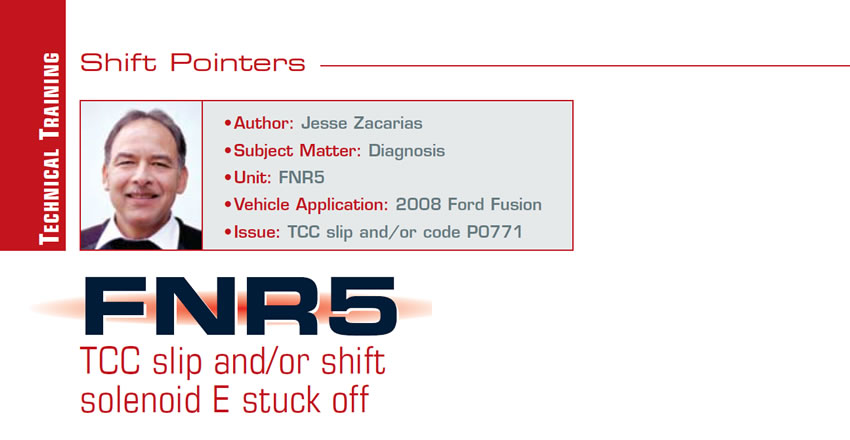
Replacement of Battery Causes TCM Damage
A 2003 Volkswagen Passat come into our shop with multiple codes and harsh engagements and was in failsafe mode. The customer said he parked the vehicle and when he started it the next day he noticed the problem. At times the TCM would fail to communicate with the scan tool. When we removed the carpet at the passenger-side floorboard to check the TCM for voltage, we noticed the whole bottom of the floor had about 2 inches of water.
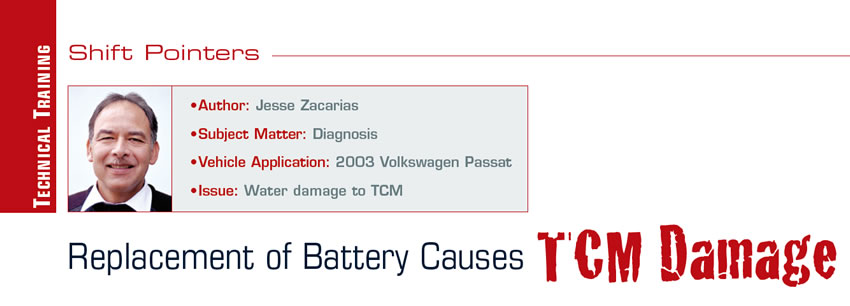
Testing the Speed Sensors in the AW55-50SN Transmission
A 2002 Volvo S60 arrived at our shop with two codes in the TCM: 0023 “Transmission input shaft speed sensor signal missing” and 0089 Transmission input speed sensor, signal too low.” The vehicle was in “limp-home mode,” which allows the transmission to be operated in 3rd and 4th gears only and with high line pressure. The customer had bought the vehicle with these conditions and did not know its history. Visual observation showed that someone had spliced into the speed sensors (Figure 1) and had replaced the transmission with a used one.
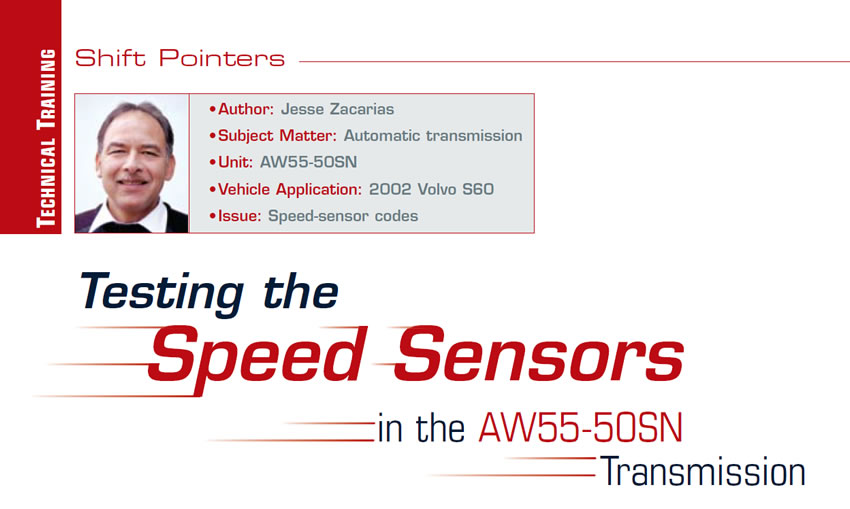
Adaptations Critical to Proper Shifts
In previous articles I have explained the important part that adaptations play in the shift quality and proper operation of a transmission. I have corrected many shift complaints from other shops that just could not get the transmission to shift properly simply by resetting the adaptations.
In this article I’ll use the VW 01M 2-3 shift to explain the hydraulic part of the adaptation. Let’s use the most-recent case I had, a ’99 VW New Beetle with a 01M transmission that had a slight binding feel on the 2-3 shift.

The Importance of Proper Testing
We can all agree that testing today’s transmissions can be more complicated then it was 20 years ago. We have to deal with more electronics and hydraulic design, not to mention programming of the transmission control module by the design engineers. Proper testing procedure and testing equipment become a necessity.
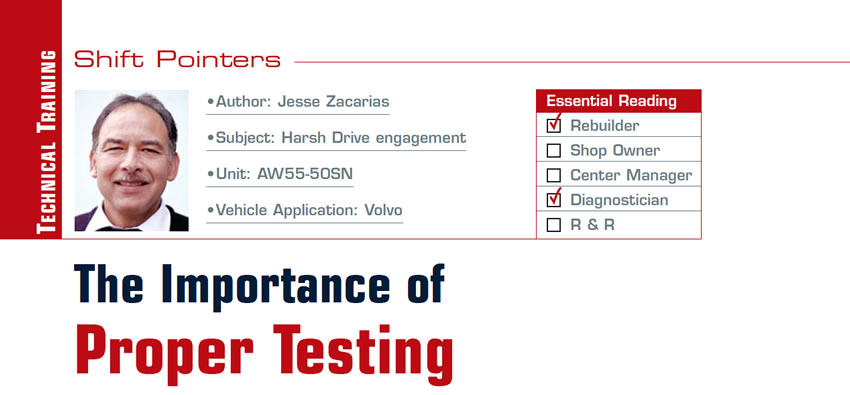
Are We Listening?
I heard a report recently on NPR (National Public Radio) that said, “Doctors are not good listeners; that is why a lot of unnecessary tests are done.”
When I heard that I said to myself, “That is true in our field too.” If we don’t listen well to the patient we may misdiagnose. Let me tell you about something that happened to me just recently that emphasizes this point. We had a customer sent to us by a local general-repair shop. He was a student here for the winter break visiting his family and was about to leave when he started to have transmission problems on his 1998 Mercedes M320.

Dealing with Shift Adaptations
Shift adaptations are something we have to deal with in the transmission industry. More and more car manufacturers are making use of this function to keep their transmissions shifting like new as they wear. Part of the function of adaptation is to allow the transmission control module (TCM) to compensate for the gradual wear of clutches and bands and for internal hydraulic leaks resulting from use.
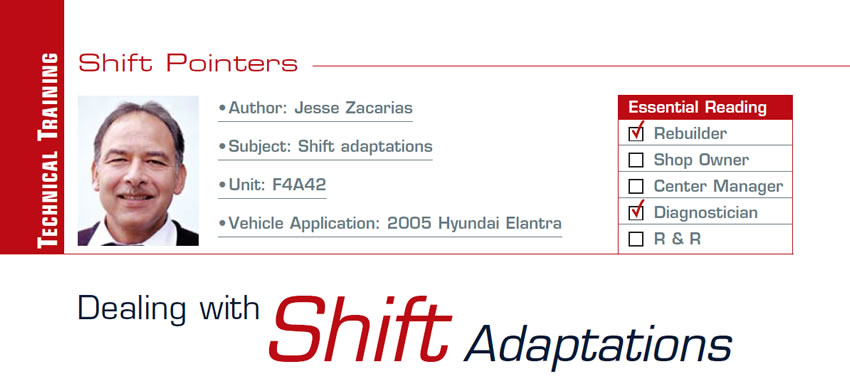
Understanding the 5R55S/W Initial Engagements
The 5R55S/W transmission has been with us for a little more than a decade. Its common complaints include harsh forward engagement; harsh reverse engagement; delayed, harsh initial engagements; flares on the 3-4 shift; and bind-up on shifts.
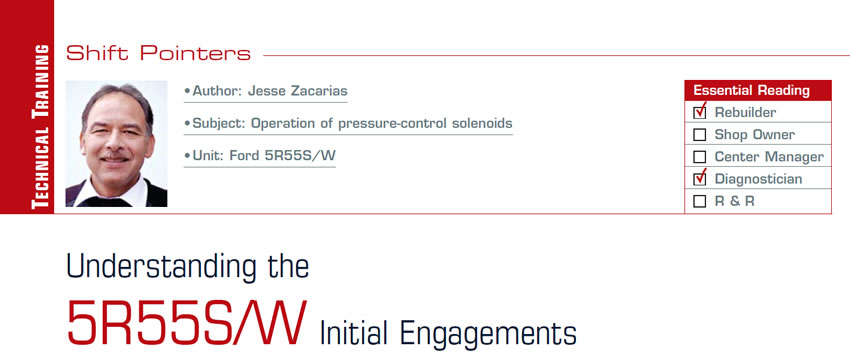
AW55-50SN Initial Engagements
I will try to explain one of the most-common questions being asked, concerning Drive and Reverse engagement problems. Some of this information has been covered at the ATSG seminars, so I will be using some amperage and pressure readings taken from a 2005 Nissan Altima as a visual aid so we can see how this transmission accomplishes smooth, almost-unfelt initial engagements, or garage feel as it is known to some.
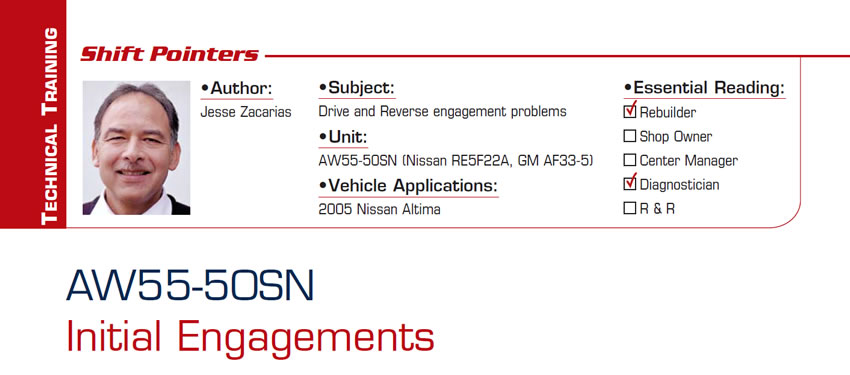
Using Parameter Identification Data to Diagnose
I recently fixed an intermittent problem on an FNR5 transmission in a 2006 Mazda 3. The shop that brought it to me had been trying unsuccessfully for the past six weeks to fix it. When I called to inform them that it was fixed, they asked how I was able to fix in such a short time what they had not being able to do in weeks.
That question is what prompted me to write this article, not because I believe I’m in any way more intelligent than the average transmission diagnostician but because of the approach I used that allowed me to find the intermittent problem.
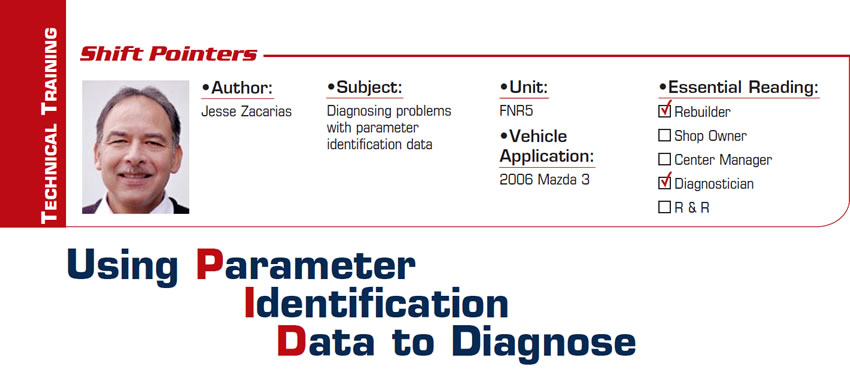
Adaptation and Shift Learning
Adaptation: One dictionary defines it as “the act of adapting or fitting one thing to another.” That very well describes what we have to do sometimes when we repair today’s modern transmissions. We have to adapt them or “fit them” to their new environment.
I was doing some testing for the research-and-development department of Valve Body Pro that required me to install different 09G valve bodies in a 2005 VW Jetta. Each valve body had different criteria to be tested, so I expected the transmission to engage and shift differently every time it had a different valve body.

What’s Causing Third-Clutch Failures in Honda Five-Speeds?
For a while now I have been interested in finding out what is causing third-clutch failures in Honda five-speed transmissions. An opportunity finally presented itself when a customer brought in his 2003 Honda LX with a 3.0L engine and a BAYA five-speed automatic transmission. We had overhauled this transmission three years ago when the vehicle had 60,000 miles. Now with 134,000 miles the vehicle had an erratic 2-3 shift and code P0780 “Problem in Shift Control System.” When we disassembled the unit the only problems we found were burnt third clutches (Figure 1) and badly burnt fluid.
